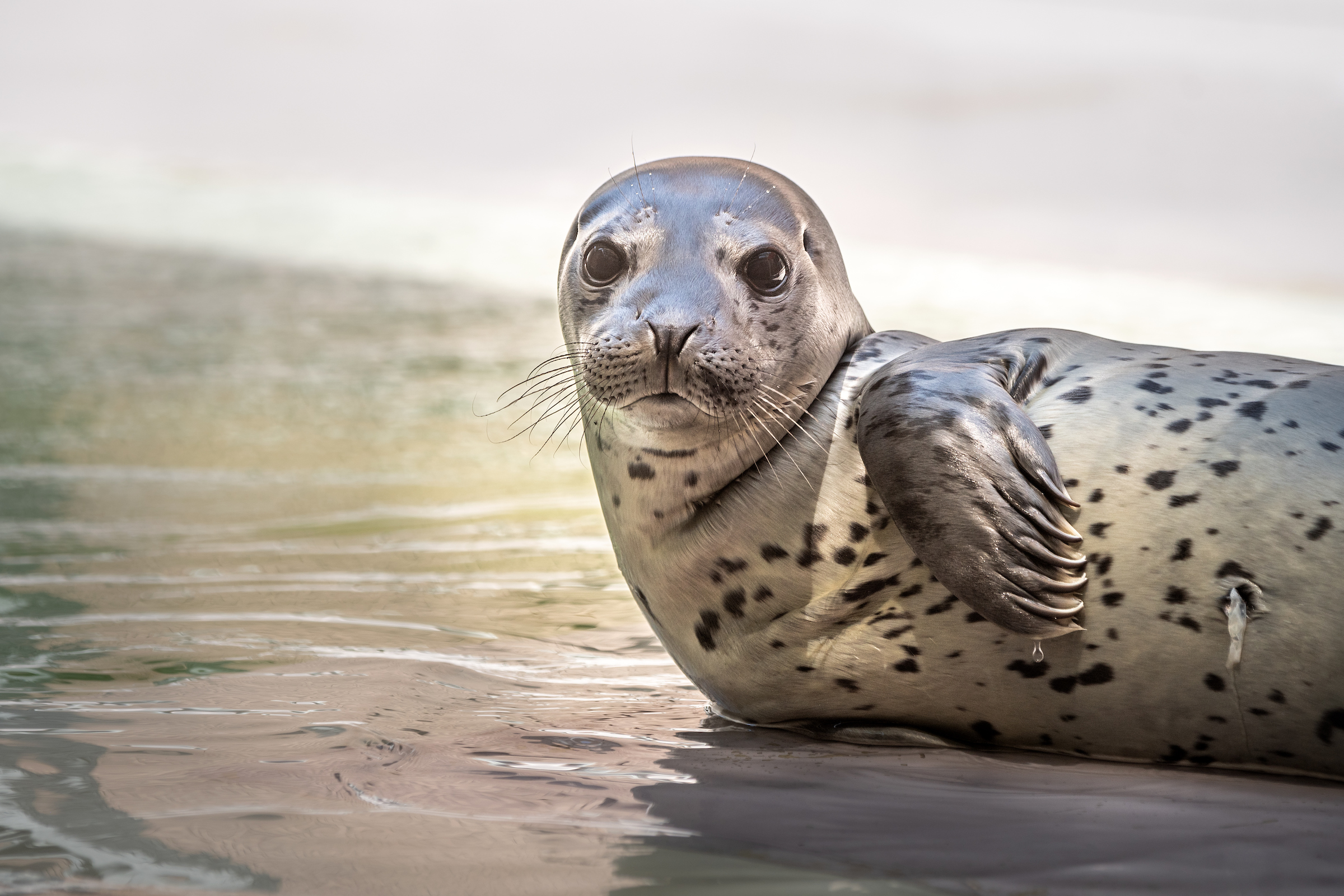About
Both seals and sea lions are found off the coast of California and at the Zoo, so how do you tell them apart? First, look at their front flippers. Seals have short front flippers, while sea lions have long front flippers. Second, watch how they swim. Seals propel themselves through the water with their hind flippers and steer with their front flippers. Sea lions are the opposite. They use their large front flippers for power and their hind flippers to steer. Finally, check out their ears. Seals have ear holes while sea lions have ear flaps.
With their short flippers, seals move clumsily on land. Their lumbering locomotion is called galumphing—a word borrowed from Lewis Carroll’s poem “Jabberwocky.” Seals are, however, adept swimmers. Blubber under their skin provides insulation, helps with buoyancy, and stores energy. They have a built-in nose plug: at rest, their nostrils are closed and open only when they need to breathe. Their ears and throat can also be closed underwater. While submerged, they stop breathing so that their heart rate decreases, thus saving energy. They may dive 500 feet down in search of fish, crabs, and shrimp. Dives usually last a few minutes but can stretch up to 30 minutes. Seals can sleep or rest in the water. They assume a position known as “bottling” where their bodies remain upright with just their faces poking above the water.
Adult harbor seals are usually solitary, but during pupping season, they “haul out” onto a beach. They return to the same breeding grounds each year along with several hundred other harbor seals. After an 11-month pregnancy, a single pup is born. Mother and pup immediately memorize each other’s smells and calls. Harbor seals nurse their pups for only 4 to 6 weeks. Seal milk is very high in fat, allowing pups to double in size and develop the layers of blubber they need to stay warm. Pups can swim within minutes of birth and within a few days are able to dive for up to two minutes.
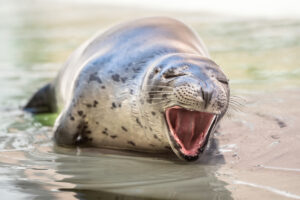
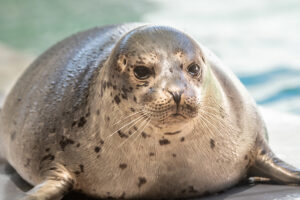
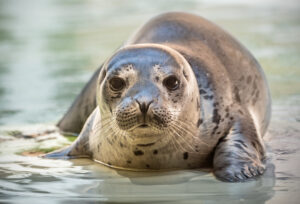
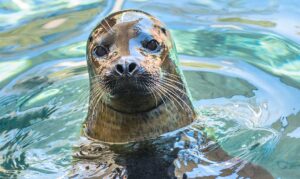
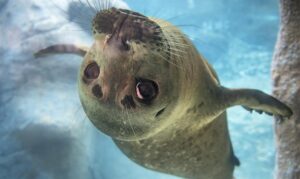
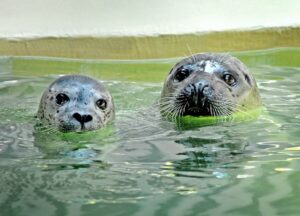
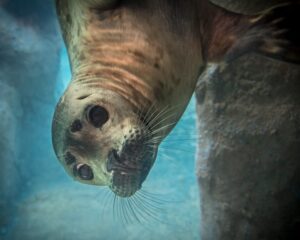

Habitat
Harbor seals are found in the waters, beaches, and rocky outcrops along the northern coasts of North America, Europe, and Asia. Atlantic harbor seals are found from the Canadian Arctic to New York and occasionally as far south as the Carolinas. Pacific harbor seals are found all along the West Coast of North America, from California north to the Bering Sea.
Diet
Seals are carnivores, eating fish, crabs, squid, and shrimp. Whiskers help locate prey by detecting vibrations in the water.
Physical Characteristics
Body length ranges between 4 and 6 feet; weight is typically between 100 and 300 pounds. Males are larger than females. Lifespan is 25 to 35 years.
LOCATION WITHIN THE ZOO
You’ll find this animal in Sea Life Cliffs near the front of the Zoo. See Zoo Map.

